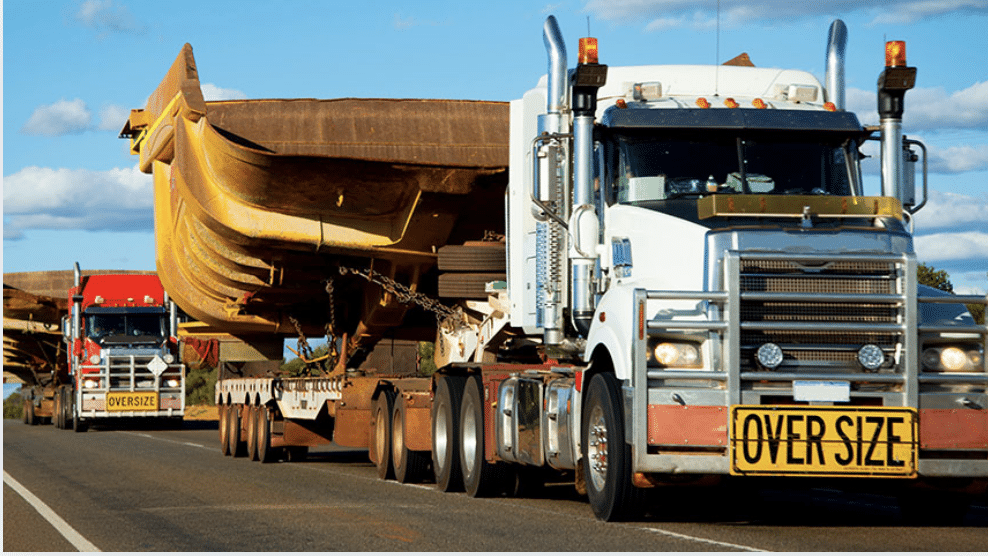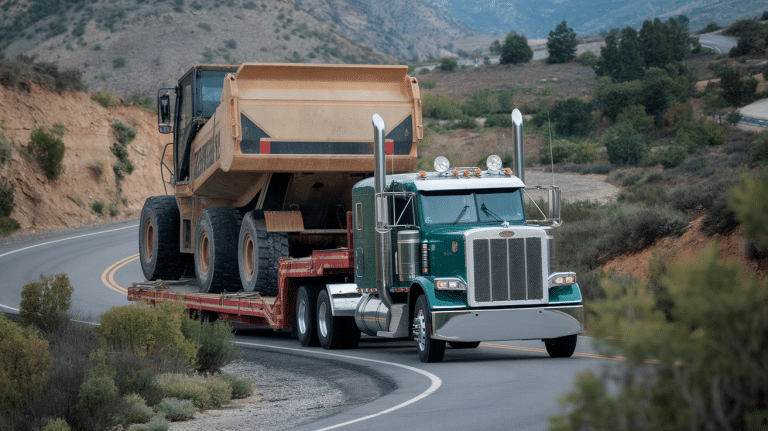Have you ever wondered what exactly qualifies as an oversize load and what regulations govern it?
If you’re planning to transport large or heavy items, you’re likely trying to figure out how to stay compliant and avoid any headaches.
Oversized loads are more than just big things; they’re any load that exceeds standard size and weight limits, which can vary by location.
Trust me, failing to follow the rules can lead to fines, delays, and even unsafe situations on the road.
In this blog, I’ve explained what oversize loads are, the regulations surrounding them, and how to navigate the state-specific requirements and travel restrictions with ease.
I’ll share my experiences to help guide you through the process so that you can handle your own oversize load projects with confidence.
What is an Oversized Load?

An oversize load is a vehicle or piece of equipment that exceeds the usual limits set by laws for safe road travel.
This means its width, height, length, or weight exceeds the limits allowed on regular roads without special permission.
Because these loads are large, they might take up more space on the road and could be harder to move safely.
To protect other drivers and avoid accidents, oversize loads often need special permits and sometimes require escort vehicles or specific travel times.
Examples include large construction machines, wide farm equipment, or long sections of bridges. Knowing these limits helps keep roads safe for everyone.
What Defines an Oversized Load?
An oversize load is defined as any vehicle or shipment that surpasses the legal size or weight limits set by federal and state transportation authorities. Specifically, a load is considered oversized if it exceeds:
- 8.5 feet (102 inches) in width
- 13.5 to 14.5 feet in height (varies by state)
- 53 feet in length for a typical trailer
- 80,000 pounds in gross vehicle weight
These limits are largely based on federal guidelines, but states may apply slightly different rules, especially for height and length.
When a load goes over any of these standard measurements, it officially becomes an oversize load and must have special permits to travel on public roadways.
Each state may also require escort vehicles, special markings, or restricted travel hours for these shipments to ensure safety.
Key Terms Related to Oversized Loads
This section defines essential terms you need to understand when dealing with oversize loads. Knowing these terms helps ensure safe and compliant transport of large shipments.
1. Escort/Pilot Vehicles
Escort vehicles are specially marked cars or trucks that travel alongside or ahead of an oversize load.
Their job is to guide the load through traffic, warn other drivers, and help keep everyone safe, especially when the load is too wide or long for normal road conditions.
2. Permit
A permit is official permission granted by a state or local transportation agency to move an oversize load on public roads.
To get one, the transporter applies through the state’s Department of Transportation, providing details about the load, route, and timing. Permits often take a few days to process and come with fees that vary by state and load size.
3. Super Loads
Super loads are extremely large or heavy shipments that go beyond normal oversize load limits.
Because of their size or weight, they usually need extra permits, special routes, multiple escort vehicles, and sometimes police assistance.
Travel Restrictions for Oversized Loads
Oversized load travel is subject to many rules, especially during holidays, rush hours, and poor weather.
These restrictions vary by state, so it’s important to check each state’s Department of Transportation (DOT) guidelines before planning a trip. Below is a general breakdown of common restrictions:
| Restriction Type | Details |
|---|---|
| Holiday Travel Bans | No travel is allowed during major holidays like the 4th of July and Memorial Day. |
| Pre/Post-Holiday Limits | Many states ban travel from noon before the holiday to the morning after. |
| Rush Hour Restrictions | Travel may be restricted near cities from 7–9 a.m. and 4–6 p.m. |
| Weekend Travel | Some states limit oversize loads on weekends, especially Sundays. |
| Nighttime Travel | Oversized or overweight loads may not be allowed to move at night. |
| Bad Weather Conditions | Travel is often restricted during snow, storms, or low visibility. |
| State-Specific Rules | Each state has its own rules; check DOT websites for exact details. |
State-by-State Oversized Load Regulations
Oversize load regulations vary in permit requirements, size limits, escort needs, travel hours, and penalties. Let’s discuss examples for several states to help you navigate the requirements:
California
- A permit is required for vehicles over 8.5 feet wide or taller than 14 feet.
- Semi-trailers up to 48 feet need no permit, but anything longer or taller does.
- Fines for permit violations can reach $3,000–$4,000.
Texas
- Permits are needed for loads over 8.5 feet wide or exceeding state length or height limits.
- Loads greater than 12 feet 6 inches wide or 75 feet long require escort vehicles.
- Permit violation penalties start at $100–$150 and can reach up to $10,000.
New York
- NYC’s limits: 13 feet 6 inches height, 8 feet width, 55 feet length.
- Permits are required if oversize, with stricter city rules, including peak-hour restrictions.
- Loads over 12 feet wide require an escort on two-lane roads.
Florida
- Oversized if over 8.5 feet wide or heavier than 80,000 pounds.
- “Super loads” are over 15 feet wide or 150 feet long and need extra permits.
Illinois
-
Oversize/Overweight permits are mandatory for exceeding standard sizes/weights on highways.
Each state issues its own permits, sets its own routes, may require pilot/escort vehicles, and has unique travel hour regulations. Always confirm with the relevant state’s Department of Transportation before moving an oversize load.
Conclusion
I’ve covered the essential information you need to know about oversized loads, from defining them to understanding state-specific regulations and travel restrictions.
If you’re looking to move large equipment or heavy shipments, you now have a better grasp of the permits, escort vehicle requirements, and the various rules that keep everything safe and compliant.
The process can feel overwhelming at times, especially with varying state rules and travel restrictions, but understanding these key aspects will help you avoid costly mistakes.
By following the guidelines, you’ll be able to transport your oversize loads smoothly and legally.
Always make sure to check with each state’s Department of Transportation before hitting the road.








